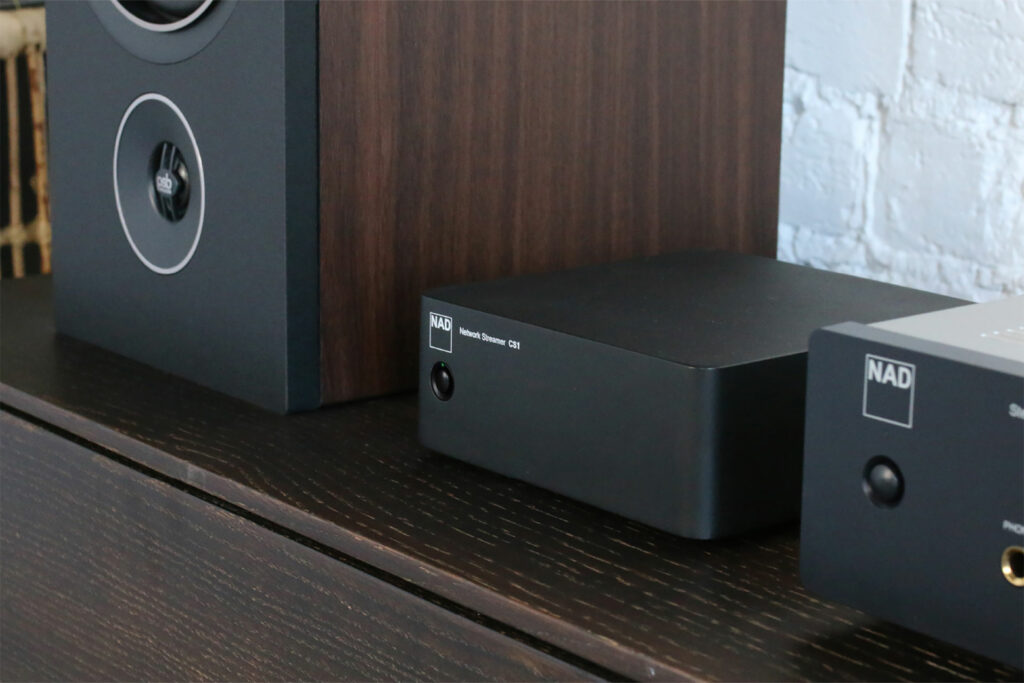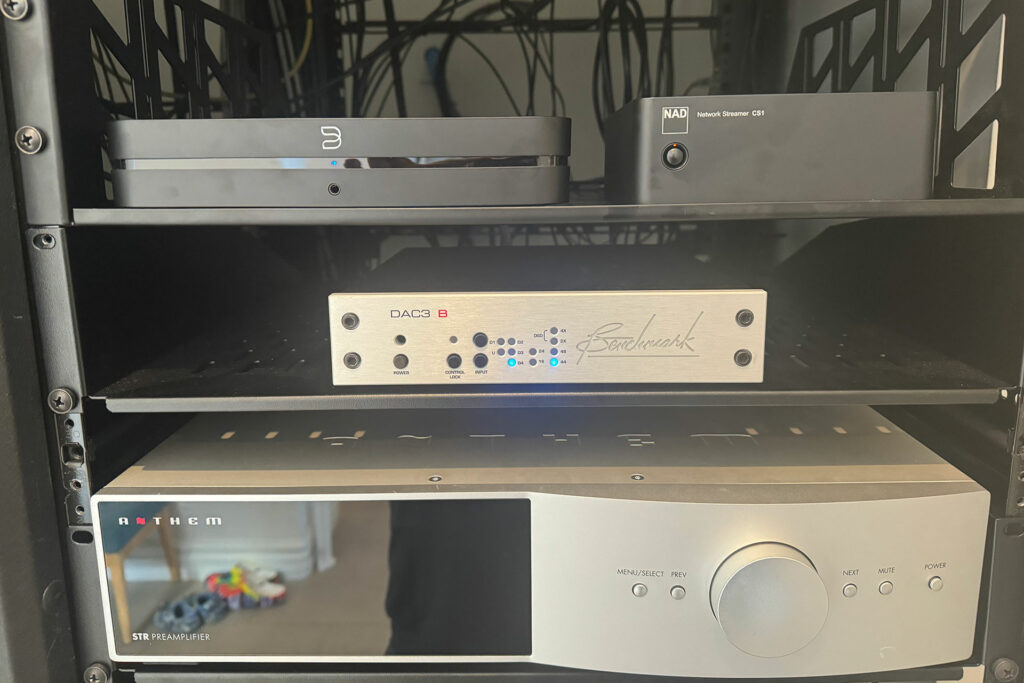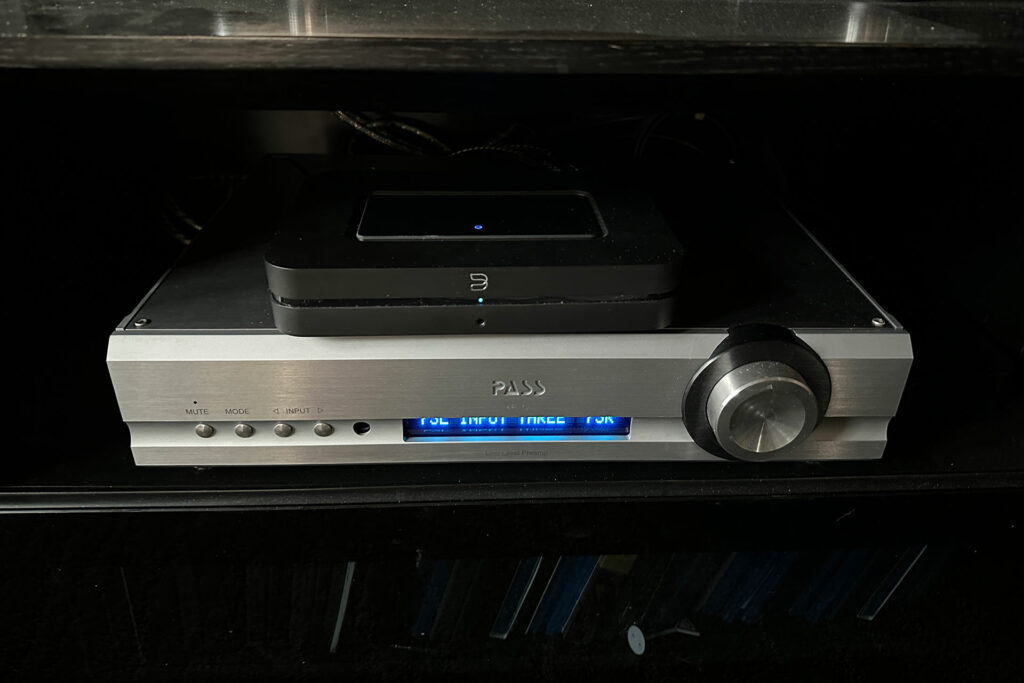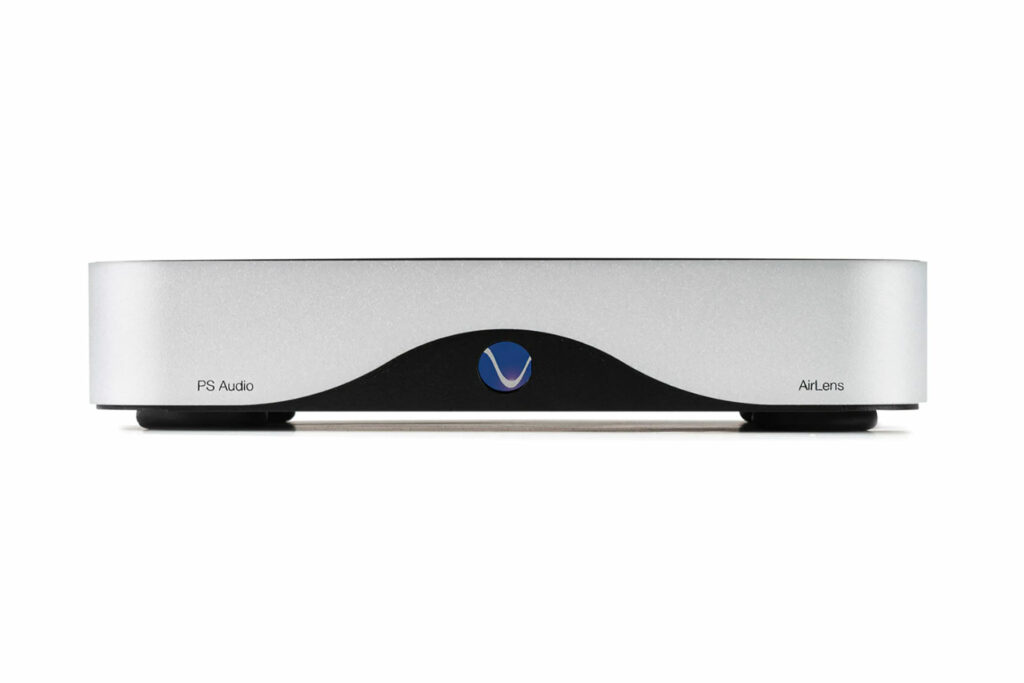Don’t feel bad if you can’t tell me the unique differences between an audiophile endpoint and a music streamer. It is a bold new world where streaming music services have delivered basically full access to damn close to every album ever released, often with files in HD (24/96, for example) resolutions. That’s a total game-changer but how do you get this magical flow of music into your audiophile system? That’s where an audiophile endpoint or an audiophile music server comes into play. Which one is right for you? That’s the question that we are here to answer.

What Is an Audiophile Endpoint?
- An endpoint is a device designed to connect you to a network. That can be for data or pretty much anything. Here’s a definition from Cloudfare.com…
- An audiophile endpoint rarely comes with its own operating system, as it runs on others, such as the front end for your music streaming services or something like Roon.
- Endpoints don’t let you load your own music on the device. The endpoint is a simple component (often a smaller than standard-sized device) that doesn’t offer storage or even the addition of storage. The idea is to play music from your streaming services or your local collection using external software. It isn’t that you can’t play your own ripped music on an endpoint as much as that you need to control said music, often on some form of laptop or other form factor of a computer with other software. Your phone or tablet might have songs on it, thus you could connect to the endpoint via Airplay 2 and play your own files that way. You just don’t plug in a hard drive and go from there. That’s not how endpoints normally work.
- Audiophile endpoints connect via wireless systems like Airplay 2 (max 24/48), or Google Chromecast (24/96), or can connect via a wire. This isn’t as optimal as how it is done with a music server.
- It is not uncommon to find an internal DAC (digital to analog converter) inside of an endpoint or a music server, depending on the design, configuration or price.
- Endpoints are increasingly being put inside of today’s audiophile components to add value to other audiophile components. Companies like NAD, Orchard Audio, PS Audio and so many others have endpoints built inside of their components. Aftermarket endpoints are often those same parts/cards put into their own little box with a nice DAC chip and a power supply.
- Endpoints are an affordable, effective and mainstream solution to get streaming media into your audiophile system.
- Examples of an endpoint could include (but not be limited to) the NAD CS-1, Orchard Audio’s Pecan PI, PS Audio’s Airlens, a Sonos Port, a Roku, an Apple TV, and so on.
- Because of the connectivity issues via Airplay or Chromecast, audiophile endpoints sound very good, are low-cost and can be easy to set up. You might be leaving some sonic performance on the table with an endpoint versus a music server, when the cost difference isn’t always that big.

What Is an Audiophile Music Server or Streamer?
So, if an audiophile endpoint is a part of a bigger, more complex audiophile component or a simple standalone network connection, then what is a music server or music streamer? These often slightly larger (but frequently not full-sized) audio components are normally a bit more complex, more capable units, which are more geared towards more advanced listeners who want to get even deeper into listening to music in HD digital files and/or their already-ripped media.
- Audiophile music servers are different from endpoints because they tend to have their own operating systems. That’s not the only factor, as a Sonos Port isn’t a music server (it is more of an endpoint), but it comes with Sonos’ excellent OS. Sonos (or Apple or Roku, etc.) has the budget to make something pretty fantastic in terms of an OS. Endpoints tend to lean on the web or app interface of other music streaming services. Music servers tend to have their own environment where you can easily toggle between, say, Amazon Music, Tidal, Pandora, Spotify, Qobuz, or whatever you like. How well the company can integrate these (they use something called an API to make this work) is a big differentiating factor with why a music server is better than an endpoint for many audiophiles.
- Music streamers/servers are designed to allow you to import your various local music files right into the unit. They don’t always have internal drives, but some do. Others, like the very popular Bluesound Node, offer you the ability to connect a network drive either wirelessly or via an ethernet connection. You might also be able to use a larger thumb drive (you can get over 1TB for significantly less than $100 on Amazon these days) and use that as your music storage. Some audiophile engineers think this SSD way of bringing in files is the best way, as thumb drives are simple, quiet and highly effective – not to mention low-cost.
- A music server is more likely to have a high-quality internal DAC. This isn’t a rule, but it is more likely in a music server.
- Audiophile music servers are more likely to be a full-sized component, meaning 17 inches wide, thus less of a dongle or smaller form factor components.
- Music servers often have fancier LED or OLED front touchscreens. This not only makes setup easier, but if your seating position is nearby your equipment, you can see the covers of the music and other meta data right on the component. Endpoints rely on you using your phone or tablet, which also can be used to control your music server. However, you are likely using the music server’s OS to manage your files, as well as your various streaming services under one app that comes at the heart of your music server.
- Some music servers play music from RAM – not a disc or a drive. Paul Wilson uses a Laufer Teknik Memory Player, which imports/rips CDs and then upconverts them to 64-bit word. There are potential sonic advantages to this type of digital up-conversion in digital audiophile components. You will want to do your due diligence on these matters on a product-by-product basis, but the idea is to not just play back your Compact Disc as accurately as possible, but to potentially make the digital stream have fewer issues (think: jitter) when it comes time to send the digital signal to your DAC and then convert your signal over to analog.

So, What Is the Right Solution For You… an Audiophile Music Server or Endpoint?
This is a uniquely personal question that will have different answers, based on the audiophile being asked. You can’t beat the cost of an endpoint these days, as the NAD that I just reviewed was a mere $349 all-in. Audiophile endpoints are also often pretty easy to set up. They tend to work more with your existing streaming apps on your phone or device. Endpoints can deliver most of the HD spectrum and can sound pretty good. If you are a silver disc guy or a vinyl junkie, but you’d like to explore new music without getting to crazy, an endpoint could be for you. If you are a power Roon user (fill in any number of other, often complex music streaming software programs), then you might use an endpoint to connect your system and let you be the master of musical ceremonies with your laptop and vast music collection. That can be a good way to get the most out of an audiophile endpoint.
Audiophile music servers or streamers tend to be a little bit more sophisticated. They allow you to do more complex tasks. For example, you might make a playlist in the streamer’s OS that includes songs or files from various sources. I’ve never seen this done on an audiophile endpoint. Bigger products offer room for better power supplies. Higher price points allow for better DAC chips, better parts quality, more stable chasses and more that can all have an incremental benefit on your sound. The main issue is being able to more easily manage your ripped music and use the server’s OS.

Some Final Thoughts on Audiophile Music Servers Versus Endpoints…
Which audiophile music streaming option is right for you is a decision that you, and only you, can make. There are exceptions to many of the rules or generalities referenced here, too, but the best news is that the starting prices for good endpoints, as well as quite capable music servers, starts out pretty low, thus any audiophile, even a young, aspiring audiophile, can own one. By all means, you can start your digital streaming music project with an endpoint and ultimately grow into a more complex music server later. There’s nothing wrong with that strategy whatsoever.
While there are still traditionalist audiophiles who only want to own and/or play physical media, they are becoming more and more rare these days, especially as streaming services deliver more and more HD files that represent the best possible sound (way above vinyl and even better than Compact Disc 16/44 sound on the digital side).
No one change has impacted the audiophile hobby harder than the advent and evolution of streaming music. For the cost of a Compact Disc (per month or perhaps included in say your Amazon Prime membership) comes master tape-quality, HD versions of truly meaningful, rocking, mainstream music. These HD options almost always deliver the best quality sound that we know, thus having some form of endpoint or music server in your system is key to getting the most enjoyment from your audiophile investment.



